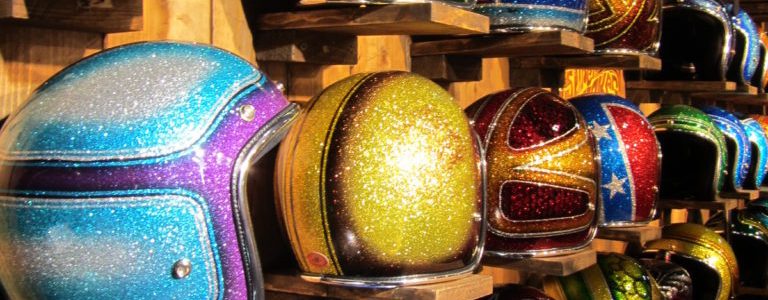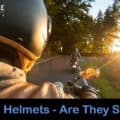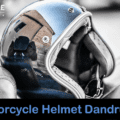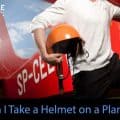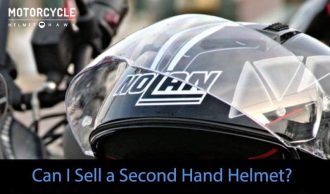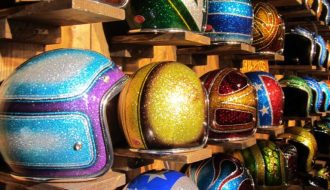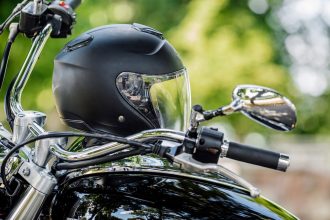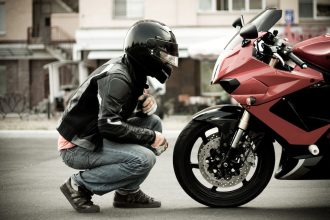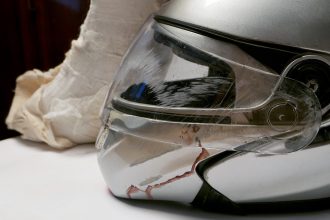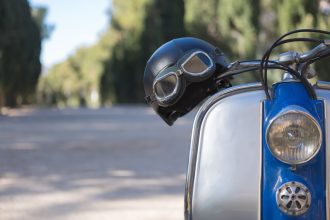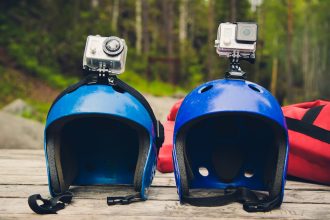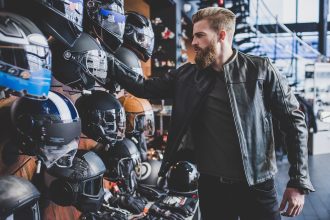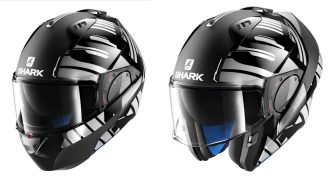No, all motorcycle helmets are not created equal.
There is a large variety and they come in a multitude of different shapes, sizes, types, styles, and materials.
In this article we will explain everything you need to know to choose the right helmet for you.
What Are The different Types of Helmets
It is important to know all of the different helmets types when you’re shopping for a motorcycle helmet, because not all helmets will offer the same level of protection.
Full Face Helmet
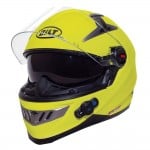
A full face helmet offers the most protection for a motorcycle rider. It covers the entire head, including the face, and has a sturdy chin strap to keep it in place.
When it comes to safety, full face helmets are the way to go. These helmets are more expensive than other types, but they offer the best protection in the event of a crash.
And while they may be hot and uncomfortable in the summer months, they can mean the difference between life and death.
Open Face (3/4)

An open face helmet leaves your face exposed, which some riders may feel is more comfortable. However, it also leaves you more vulnerable to wind and debris.
Open face helmets are not as safe as full-face helmets, so if you’re looking for the most protection possible, choose a full-face helmet.
Still, open face helmets offer some advantages. They’re typically lighter weight and provide better airflow, which can be a plus on hot days. And some riders simply feel more comfortable with an open face helmet.
If you do choose an open face helmet, make sure it has a good visor to protect your eyes from the sun and debris. And consider wearing goggles for even more protection.
An open face helmet offers less protection than a full face helmet, but it still covers the head and has a chin strap to keep it in place. These helmets are less expensive than full face helmets, but they offer less protection in the event of a crash.
Half Helmet
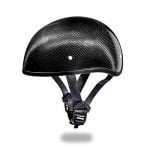
A half helmet is the most popular type of motorcycle helmet. It covers the top of your head and includes a chin bar, but doesn’t extend down over your face or the back of your head.
Many riders feel that half helmets offer the best mix of protection and comfort.
One downside of half helmets is that they don’t offer as much protection as full-face helmets. If you’re involved in a crash, there’s a greater chance that your face and head will be injured.
Also, half helmets don’t do a great job of protecting your ears from the wind and noise. And, they don’t always stay in place as well as full-face helmets.
Modular (Flip-up/Flipface)
Modular motorcycle helmets are popular among riders because they can be worn in a variety of configurations.
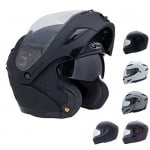
The helmet can be worn with the face shield and visor in place, or the face shield and visor can be removed to create an open-face helmet.
Riders can also wear the modular helmet with the chin bar in place to create a full-face helmet.
Most modular helmets are designed with a flip-up chin bar that is easy to operate, even with gloves on.
The best modular helmets will have a locking mechanism that keeps the chin bar securely in place while riding.
Motocross (MX) Helmets
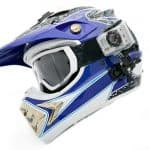
Motocross helmets are designed to protect riders during off-road riding. They are typically made from lightweight materials, such as carbon fiber and Kevlar, in order to reduce the risk of neck injury.
Motocross helmets also feature a peak, or visor, to protect the rider’s eyes from debris and the sun.
One of the most important safety features of any motorcycle helmet is the chin strap. This strap helps to keep the helmet securely in place in the event of a crash.
Look for a helmet with a chin strap that is easy to adjust and that stays put once it is fastened.
Dual Sports (Hybrid)
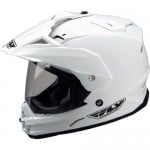
Dual Sport helmets are designed to provide both street and off-road protection.
They are typically made from a lightweight composite material and have a peak that can be flipped up or down.
This type of helmet is good for riders who want the option of using the same helmet for both on and off-road riding.
Racing Helmets
There are many different types of motorcycle helmets available on the market today, each designed for a specific purpose.
Motorcycle racing helmets are among the most specialized, and are designed to provide riders with the highest level of protection possible.
Racing helmets are required by most racing organizations, and are typically made from very lightweight materials that offer little in the way of protection from impact.
However, they are designed to be very aerodynamic, and can help riders to achieve high speeds on the track.
Many racing helmets also feature built-in communications systems, which allow riders to stay in touch with their pit crew while on the track.
These systems can be extremely helpful in providing information about race conditions and helping to make strategic decisions during a race.
How to Choose the Right Helmet
It is important that you wear a motorcycle helmet when you ride. Not only does it protect your head in the event of a crash, but it also can help you avoid a crash in the first place.
With so many different helmets on the market, however, how do you choose the right one for you?
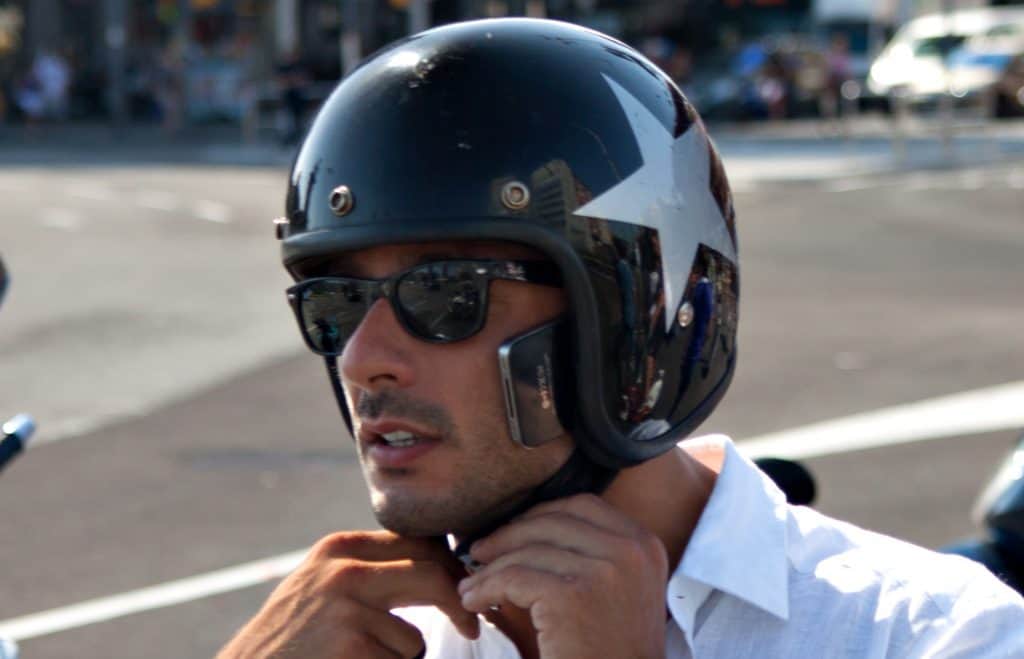
The first thing to consider when choosing a motorcycle helmet is the type of riding you will be doing.
If you are going to be doing off-road riding, then you will need a different helmet than if you are going to be primarily riding on the street.
Off-road helmets tend to be lighter and have more ventilation, while street helmets are heavier and have less ventilation.
Another thing to consider is the fit of the helmet. You want a helmet that fits snugly but is not too tight.
The best way to try on a helmet is to go to a motorcycle shop and have them help you find one that fits properly.
Once you have found a few helmets that you like, it is important to read reviews before making your purchase.
- Tips for buying a premium helmet
- How To Correctly Fit A Motorcycle Helmet?
- What Size Motorcycle Helmet Do I Need?
- How To Strap a Motorcycle Helmet?
- How Tight Should a Motorcycle Helmet Be?
Make Sure The Helmet Fits and is Comfort
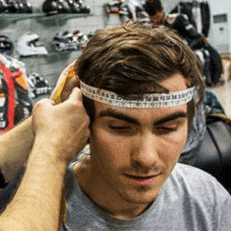
A good fit is essential for a motorcycle helmet to be effective. A properly fitting helmet will protect your head in the event of a crash, and will also be more comfortable to wear, making your riding experience more enjoyable.
When choosing a motorcycle helmet, be sure to try on several different models to find one that fits well and is comfortable to wear.
The first step in finding a comfortable helmet is to determine your head size. To do this, wrap a measuring tape around your head just above your eyebrows.
The measurement in inches is your hat size. Once you have your hat size, you can try on different helmets to find one that fits snugly without being too tight.
Check Out The Helmet’s Safety Features
Most motorcycle helmets come with a few key safety features that are designed to protect riders in the event of an accident.
These features include a sturdy shell, impact-resistant padding, and a chin strap.
The shell of a motorcycle helmet is typically made from tough polycarbonate or fiberglass. This outer layer helps to deflect debris and protect the rider’s head from impact in the event of an accident.
Beneath the shell, motorcycle helmets have padding that helps to absorb shock and protect the rider’s head from further impact. This padding is usually made from a variety of materials, including EPS foam, gel, or air bags.
Finally, most motorcycle helmets have a chin strap that helps to keep the helmet securely in place on the rider’s head.
This is important, as a loose helmet can come off in an accident and fail to protect the rider’s head.
Conclusion
There lot of different helmet types, with the three main types of motorcycle helmets: full-face, open-face, and half-helmets. Full-face helmets offer the most protection, as they covers the rider’s entire head, including the chin and face.
Open-face helmets do not cover the chin or face, and therefore provide less protection than full-face helmets. Half-helmets only cover the top of the head, and offer the least amount of protection.
Likewise, a helmet made from materials like Kevlar or other high-strength materials will offer more protection than a helmet made from cheaper materials.
And finally, a helmet that has been certified by the US Department of Transportation (DOT) or another independent testing agency will offer more protection than a helmet that has not been certified.
We hope you find this information helpful. If you would like to support this site, you can by purchasing through recommended links on the page. Should you decide to purchase, we may earn a small percentage of the sale at no cost to you.
Thank you for your support.
Looking for a Replacement Helmet? Here’s a Recommendation
| Best Full-Face Motorcycle Helmet | Price | Rating |
|---|---|---|
| 5/5 rubber chickens | ||
| 4.8/5 rubber chickens | ||

